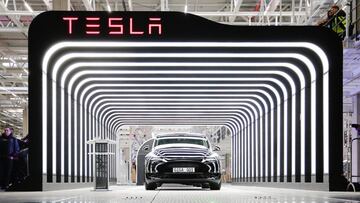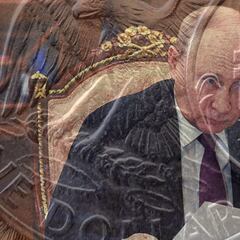Why are interest rates for cars and mortgages going up?
The Fed's interest rate raise will increase the cost for those borrowing for vehicles or houses, though rates are far lower than they were 20 years ago.


Year-on-year inflation in the US is at 7.5 percent, far above the 2 percent target set by the Federal Reserve. This has been driven by the cost of living crisis from the pandemic, problems exacerbated by the war in Ukraine.
In a bid to tackle this inflation, the Federal Reserve announced its first interest rate rise in three years by 0.25 percent last week. It is expected to be the first of many this year as the bank tries to keep a lid on rising prices that are stinging the wallets of every American.
FED DECISION: The Federal Reserve votes to raise interest rates by 0.25%, its first interest rate increase in more than 3 years. https://t.co/YKjkgqi8Ya pic.twitter.com/aWRLjLUZVR
— CNBC (@CNBC) March 16, 2022
In a press conference after the meeting announcing the change, Jay Powell, Fed chair, said the committee had raised rates “against the backdrop of an extremely tight labour market in high inflation” and that it “anticipates that ongoing increases in the target range for the federal funds rate will be appropriate”.
This means any aspect in your life where you need to borrow money will become more expensive, whether it be finding a mortgage for your house or getting out of debt.
Related stories:
- Have applications for unemployment claims increased in the first quarter of 2022?
- Have unemployment rates increased or decreased in March?
- Mortgage lock rates increased in February, why?
- Which credit cards have low interest rates?
How are mortgages and cars specifically affected?
Money saved during the pandemic means that the reopening of the economy is allowing plenty of people to buy new houses, driving up their value. As the Federal Reserve interest rates remained low for so long, affordable mortgages were easy to acquire. As of the last quarter of 2021, house prices had risen 14.2 percent on a year prior, putting the median average for a one family home to $361,700.
After hanging steady throughout most of 2021, the turn of the year saw a surge in the average mortgage rates. The average 30-year fixed rate mortgage now stands at 3.92 percent, nearly a full percentage higher in just four months. With the bank's rate increased, it is more than likely that the interest you pay on the mortgage will increase further.
Related stories
A prospective 5 percent mortgage rate would be high for the last decade, but compared to the mortgage rates of the 1980s and 1990s of between 10 and 16 percent, the market is still in decent shape for home buyers.
The same is true of auto sales. At the turn of the millennium, car loan rates stood at 9 percent. Now, they are at 1.9 percent, due to rise to 2.9 percent by the Fed's announcement. A larger problem for car buyers in the lack of computer chips as a result of supply shortages from the pandemic. This has led to a shortage of new cars and pushed up the price of second-hand cars.
it's very expensive to be poor
— Dan Price (@DanPriceSeattle) March 14, 2022
The average low-income person pays $11,000 for a $6,500 car because of 20% interest rates.
Some finance companies make a profit after 3 months of payments. They reposes 35% of those cars and resell them for more profit.https://t.co/8e6M9n6UYO
For example, since February 2021 the average price of a second-hand car has risen by 38 percent, a staggering figure. However, this price has started to come down as the US continues to reopen its economy. For those buying a car on finance, expect your monthly fee to increase. With interest rates likely to increase further during the year there remains good opportunities to buy cars on finance at present, provided you have a good credit score.

